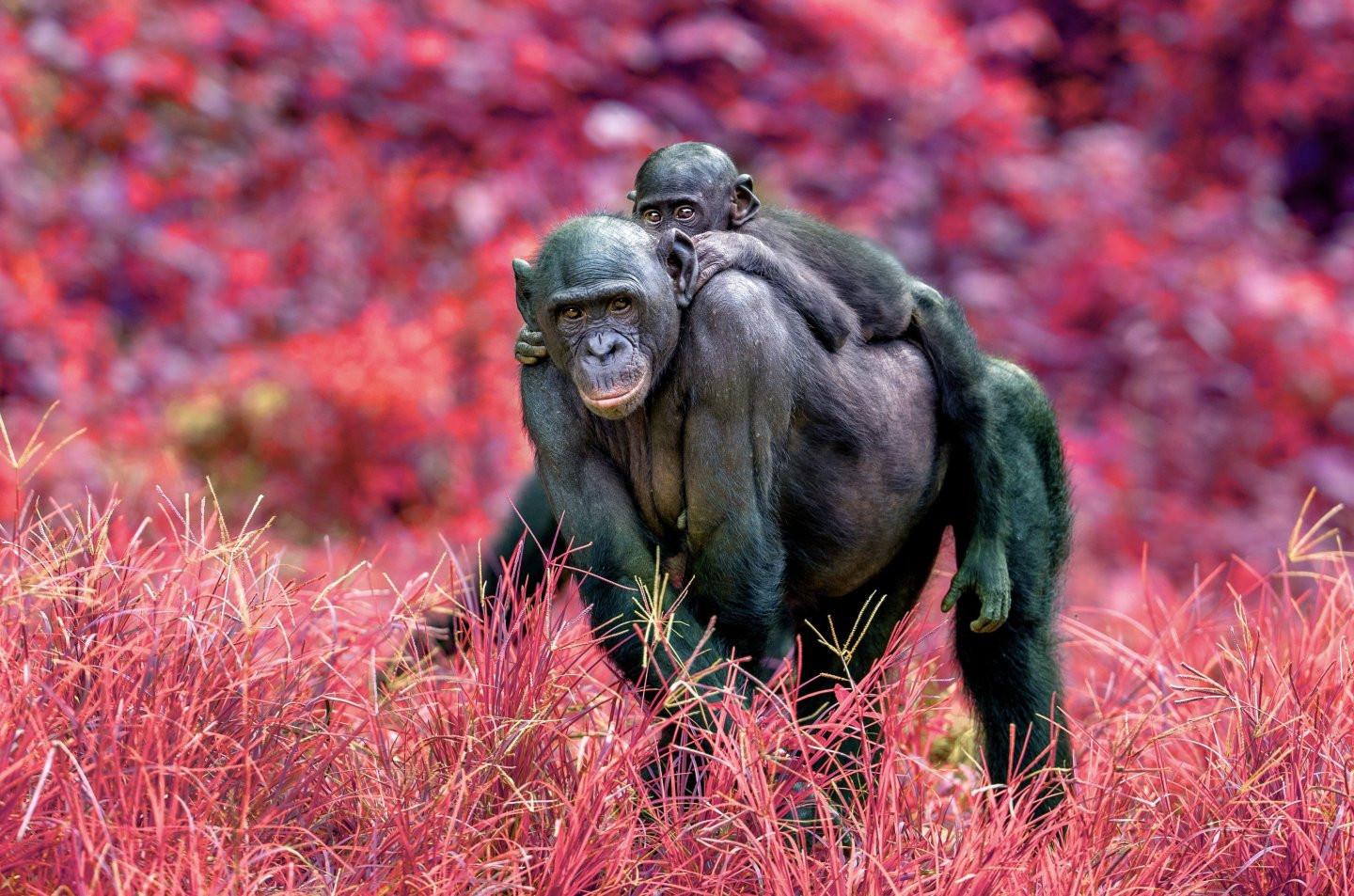
Lomako Bonobo Project (Congo)
Endangered species: the bonobo
AZF is doing everything in its power to improve the lives of bonobos, a cause to which many scientists contribute. This is demonstrated by the bonobo experts of the Antwerp ZOO Centre for Research and Conservation (ACRC), the centre for scientific research of parent company KMDA. They have been studying those species ever since the 1990s, which is also when the very first nature conservation project in Congo was initiated. This project comprises the solid foundation on which AZF is still building today, and will ensure that future generations will still be able to enjoy these amazing great apes and their valuable habitat.

Why the bonobo?
Humankind shares 98 per cent of its DNA with the bonobo. Keeping this in mind, it should hardly come as a surprise that AZF takes such a heart-felt interest in the fortune of this intelligent primate.
The situation as it stands today unfortunately looks everything but rosy: deforestation and the bush meat trade pose a substantial threat to the very survival of these inspiring animals and their habitat.


From isolation to innovation
- HOTSPOT:
The protected Lomako Yokokala nature reserve, spanning almost 4,000 km², is home to the bonobo. Approximately 1,000 of these great apes share this reserve with forest elephants, bongos, leopards, and many other animals.
- LIVING LANDSCAPE:
The Lomako-Yokokala nature reserve is part of the Marina-Lopori-Wamba Landscape, which is located in the middle of the Congo River basin. This landscape is marked by extreme poverty in the Tshuapa and Mongala provinces. Lack of proper infrastructure prevents goods from reaching the nearby town of Boende and therefore the markets located even further away.

3. LAND USE:
In conjunction with the indigenous population, AZF explores the possibility of developing non-invasive commercial activities that are in harmony with the bonobos and their forest. AZF aims to:
- allocate agricultural forestland for the production of coffee, cocoa, and rubber;
- encourage private entrepreneurship with non-invasive activities such as the catching and/or production and subsequent sale of caterpillars, honey, or fish;
- facilitate small-scale bonobo tourism.
4. FEET IN THE MUD:
The AZF team in Camp Iyema keeps a close eye on the bonobo population in the territory. They take stock of the bonobo families and observe them in order to recognise the relationships within the group and identify newcomers.

AZF’s ten bonobo guides, led by one coordinator, prepare the environment and the animals for scientific research. They keep an eye on the families and track their movements in order to find them again. AZF also finances the park rangers, who ensure the safety of the area by protecting the animals and the researchers from poachers, illegal loggers, and forest contractors.
The protection of bonobos and the creation of a sustainable economy go hand in hand.
5. COHABITATION:
The new use of the land in this area allows the indigenous population to farm the land without a negative impact on the habitat of the bonobos. This new economic activity contributes to the survival of the species.
6. FUTURE-PROOFING:
AZF cooperates with the indigenous population and local authorities in a respectful manner and trains teams. Working together, they are preparing the area for a sustainable future. AZF aims to involve the surrounding communities more closely in drawing up the management plans needed for this. By promoting the participation of women in the local economy, AZF develops and supports economic initiatives at the local level. AZF is also creating a green corridor between the Lomako Nature Reserve and the city of Boende, with the intention of rebuilding a living economic landscape along this axis. What is done by AZF today determines what the future will look like.


De Zegge (Geel, Belgium)
The nature reserve De Zegge is a vulnerable paradise for rare species of flora and fauna and one of the very few places in Belgium to contain a unique marsh habitat with peatlands. A bog like this is so important because it retains carbon, thus serving as a beacon in the battle against global warming. De Zegge is, however, under tremendous pressure because its water balance has come under threat. AZF also aims to work towards a harmonious future for people, animals, and nature – not only abroad, but also in its own country.

'Back to Buta' Okapi (Congo)
Our story starts with the arrival of the first okapi at Antwerp ZOO in 1919. The animal was named ‘Buta’ after the capital of the Province of Bas-Uélé, where the okapi occurs in the wild. This is why both the location and the species are so meaningful to the Antwerp Zoo Foundation. AZF wants to give this elegant and mysterious species a safe, permanent home.